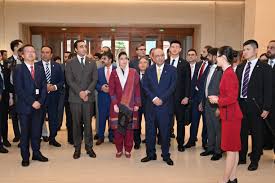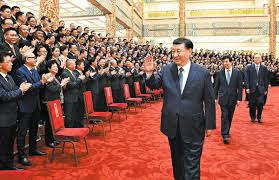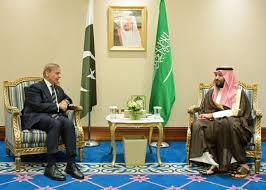Why are so many migrants arriving on Italy’s shores?
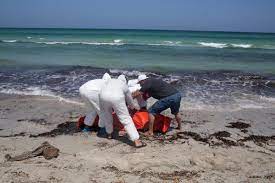
Rome: This weekend more than 1,000 migrants arrived in Italy after crossing the Mediterranean. Since the beginning of the year, arrivals have increased month on month and are far greater than in the two previous years. InfoMigrants takes a look at why.
Since the beginning of 2023 the number of migrants arriving on Italian shores has been increasing steadily every month, from 4,962 in January, to 9,465 in February, 13,263 in March and 14,507 in April. In the first eight days of May more people arrived than during the whole of May last year.
The UN Refugee Agency UNHCR confirmed on May 8 that year-to-date arrivals are up by 276% and month-to-date arrivals are up by 137%. Not since 2016 have so many migrants arrived in Italy in the month of January.
Nevertheless, Flavio Di Giacomo, spokesperson for the UN Migration Agency IOM, warns against calling it a “crisis” or “emergency,” or sounding any alarms.
In a telephone interview with InfoMigrants, just after returning from the Italian island of Lampedusa, Di Giacomo confirmed that more than 44,000 migrants have arrived in Italy since the beginning of the year. “But the reasons behind this migration are quite complex to understand…and shouldn’t be labeled an emergency,” he said. “That is a very Europe-centric way of seeing things […] In a country of nearly 60 million people [Italy] and in a continent of around 450 million people, this is, in our opinion, not an emergency.”
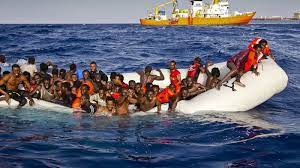
Several new trends may help to explain why so many people are risking the voyage, Di Giacomo notes. First, he underlines that Tunisia has taken over from Libya as the main country of departure for migrants crossing the Mediterranean to Europe. According to UNHCR figures, 12% of arrivals to Italy in January came via Turkey, 51% from Tunisia and 37% from Libya.
Di Giacomo also sees that as well as Tunisian nationals, increasing numbers of sub-Saharan Africans are also departing from Tunisia, in particular from countries in West Africa, such as Ivory Coast, the largest single group of migrants currently arriving in Italy.
The fact that more private rescue ships may be operating in the central Mediterranean region has not contributed to the number of attempted crossings, Di Giacomo points out. Under the Italian government’s new migration laws, private rescue ships’ ability to make multiple rescues in one mission has been curtailed, and the often long journeys to a port of disembarkation means it is several weeks in between one mission and the next.
Di Giacomo talked to many migrants while on Lampedusa who told him: “In Tunisia, migrants are telling us that lately there has been a lot of discrimination against Western African migrants. Conditions are very harsh. Migrants are reporting they are being robbed, assaulted, quite often and they are tired of this situation, so they are trying to leave the country.”
Leaving the country for these migrants is quite difficult and dangerous, Di Giacomo adds. Some of them want to return to their own countries but can’t, and others hope that Europe might provide a safer place for them to work than Tunisia has become. “I spoke to people who told me that Tunisia was a country of destination, particularly those coming from Ivory Coast and Guinea. For those countries it is easy to get to Tunisia because there is visa free movement. They have been working in Tunisia for years.”
“What is worrying for us is the way these migrants are arriving,” explains Di Giacomo. He cites a dangerous new trend of using badly-made metal boats on which mainly sub-Saharan African migrants are leaving Tunisia. These boats often break up mid-voyage and capsize easily.
“The numbers [of arrivals] we are recording right now are similar to those recorded in 2016, 2017. But back then there were lots of NGOs operating sea rescue, there was [the EU-led naval operation] Operation Sophia and migrants were being rescued at sea and brought to Sicily’s main ports, Augusta, Pozzallo, Catania, Messina,” says Di Giacomo.
In those ports there was less of a problem of reception. Italy has a population of just under 60 million people. Even a few hundred thousand migrants a year should be easily absorbed into a country that size, he points out.
What is different now, and perhaps a reason that some are more concerned, thinks Di Giacomo, is the fact that most of the migrants arriving and rescued are making land first on Sicily’s tiny satellite island of Lampedusa.
“Around 70-75% of migrants arrive now directly on Lampedusa. That is what is becoming difficult. This is an island that is maybe 20 kilometers, with a reception center that has a capacity of just 400 people, this is what is becoming challenging and difficult to manage.”
With a seaworthy vessel and a good engine, the journey from Tunisia to Lampedusa can take 18-24 hours. But the poor-quality of boats is causing the journey to take longer, leading to more and more deaths and accidents, as Di Giacomo himself witnessed.
“A few days ago, on Thursday, I witnessed this arrival of migrants, 46 people, and there was one corpse, the corpse of a woman. I have been told that when the rescuers arrived, they started to move and the boat capsized, they all fell into the water and this lady was the one who died. She was with her nephew, she was like a mother to him, and I saw this young boy, and he was just sitting there shocked. There were a lot of minors, there was also a seven-month-old baby on board, with its mother, who could barely walk, she was so tired.”
This is not the first time that Italian newspapers and analysts have asked the question “why so many arrivals to Italy?” When Europe saw peak numbers of migrants arriving in 2015 and 2016, with over a million arriving overall across the bloc in 2015, politicians, the press and analysts published numerous articles and interviews on the subject.
Post-2016, many in Italy felt that the numbers of migrants suddenly using the Central Mediterranean route might be due to controls being tightened on the eastern Mediterranean route via Turkey and Greece, after the EU-Turkey deal was struck. But that deal doesn’t do much to explain why there is an increase this year.
Migration and the reasons for it are always complex and multi-layered, emphasizes Di Giacomo.
Many analysts this year have focused on the political, social and economic problems facing Tunisia as one of the main drivers of the increase in migrants coming from that country.
According to the Italian government however, there could be more sinister forces at work. In March, several members of the government declared that the Wagner group, the mercenary soldiers fighting on Russia’s payroll in Ukraine, but also operative in several African countries, could be behind increased numbers of migrants arriving.
In fact, the Italian Defense Minister Guido Crosetto told the Italian newspaper Corriere della Sera in March 2023 that it “seems to me that the exponential increase in the migratory phenomenon from the African coasts is partly, in no small measure, due to a clear strategy of hybrid war being fought by the Wagner mercenary group on Russia’s payroll.”
According to quotes from Crosetto in Italy’s financial broadsheet Il Sole 24 Ore, the Wagner group, which is present in several African countries and has been strengthening its influence there since 2017, are “exerting their not inconsiderable influence in some African countries.”
Crosetto is reported to have said that the “EU, Nato and the West need to be aware that just as cyber attacks have become part of our global experience since the conflict in Ukraine began, now the southern border of the EU is also becoming, each day, more dangerous. Uncontrolled and continuous immigration as a result of the economic and social crises is becoming a way to hit those countries most exposed to it, first and foremost Italy.”
According to Il Sole 24 Ore, Crosetto went on to say that the NATO alliance, so crucial in the Ukraine war, could be under threat if countries like Italy were “left alone” to deal with migration. The same point has been stressed by various members of the Italian government since taking office.
Il Sole 24 Ore also printed a response from the leader of the Wagner group Yevgeny Prigozhin, denying any involvement in migration and telling the Italian Defense Minister to “look in other directions to solve his problems.” Prigozhin said that he didn’t want to be blamed for problems “Italy had failed to solve.” He added that “we don’t know what is going on with the migrant crisis, and we are not involved. We have loads of our own problems to solve.”
While he says he has seen no proof for the ‘Wagner theory’, Di Giacomo agrees that criminal gangs are certainly profiting from the increase in traffic on these routes. Di Giacomo says that he has heard testimonies from migrants that suggest that both Tunisians and some of the migrants’ own compatriots – fellow migrants from sub-Saharan Africa – are actively recruiting ‘passengers’ to set off for Europe.
The Italian Institute for International Political Studies (ISPI), an independent think tank, reported in March that the increase in migrant crossings could be due to increased activity of criminal networks in both Tunisia and Libya.
In Libya, the ISPI report identified structured criminal networks with transnational links that were active in three parts of Libya in particular, Zuwarah, Al Zawiyah and Sabratah. They also said that both Tunisian mafia groups, and a combination of Italian and Tunisian criminal networks working together were busy with all sorts of illicit trade across the Mediterranean, including people smuggling.
Militias, gangs and mercenaries in Libya
ISPI did however provide some background to the Wagner group theory. It said that mercenaries working for Wagner were present in Libya, Mozambique, Central African Republic, Mali and Sudan. According to its analysts, members of Wagner were helping to run mines or provide security for these enterprises and had made as much as $250 billion (around €227 billion) in the last four years.
According to ISPI’s sources, the Wagner group was also present in eastern Libya where it was known to be supporting General Khalifa Haftar. The Italian news agency ADNKronos reported that there were about 2,000 mercenaries known to be present in Libya.
Recently, the Italian government tried to use figures published by the UNHCR on the number of foreigners in Libya to suggest that there could be that many people waiting to depart for Italy. This is untrue, says Di Giacomo. Not everyone living in Libya, even if they are a migrant, is waiting to come to Italy.
The Italian coast guard in Lampedusa already have their work cut out, says Di Giacomo. What is needed from Europe is a longer-term strategy to deal with migration, he says, adding that instead of focusing on just “stopping migrants from embarking on the journey,” Italy and Europe need to start looking at the ‘push factors’ driving migrants to undertake the journeys.
Between January and December 2022, according to the UNHCR figures, Italy rejected 52% of first asylum claims. It also granted refugee status to 14% of applicants that year, and gave 13% subsidiary protection. 21% were given complimentary forms of national protection, which in Italy means a kind of acknowledgement that they suffered abuse and torture on route to the country but are not directly escaping their country of origin. This gives them the right to live and work within Italy, although the status is renewable and subject to change under Italy’s new immigration laws.
Most of those who were rejected have two chances to appeal, Di Giacomo says, meaning that they will remain in Italy for about two years. After that, they are told to leave the country, but for most applicants, they do not and cannot leave. “Italy has no returns agreement with most of these countries,” says Di Giacomo, that means that Italy and Europe will be facing increasing numbers of rejected asylum applicants, migrants who fall out of the system and join the numbers of unregistered, therefore becoming even more vulnerable to exploitation in order to survive.
“If you are just looking at the next few months, or next election, then you will only have a short-term strategy,” says Di Giacomo. He says Europe needs to understand that migration is a geo-political phenomenon and not just a humanitarian one. Nevertheless, he remains hopeful. “I think, hope, that things will start to change in Europe in the next few years. The whole system might understand that Europe needs migrants, this is here to stay, and it should be managed with long-term policies. We are just in a moment of transit possibly. I think we will get there sooner or later. What we need to start realizing is that migration can be a resource, it is not a problem, and it is much-needed.”


